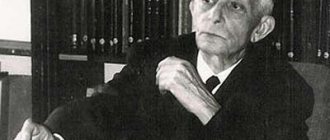All the main techniques of Gestalt therapy can be divided into two large groups, namely “projective” and “dialogue” approaches. In the first case, work is carried out with a person’s dreams, his imaginary dialogues, and emerging images. In the second case, painstaking work is carried out at the boundaries of contact between the specialist and the client. Moreover, both techniques can often be intertwined, combined and complement each other. Taken together, this makes it possible to have the maximum impact on a person. The client must understand that he and the specialist are equal partners. It is on these grounds that a contract is concluded between them. At the same time, the client forms his specific goals. It is often difficult for the client to agree to such conditions, since he strives to avoid responsibility in everything. Already at this stage the client realizes full responsibility for his actions.
"Hot chair" and "empty chair"
Specialists at the Moscow Gestalt Institute often use the “hot chair” technique. This term means a place where a person can tell others about all his openings. In this case, the work takes place between the specialist and the client, and the other members only remain silent. After the end of the conversation, participants can talk about their feelings and the emotions they experienced. Another technique is the "empty chair". In this case, in front of the client is a person who has some significance. Also, in this case, it does not matter whether this person is still alive or has already died. All this helps resolve intrapersonal conflicts.
Boundary and contact
Let's consider the basic concept of Gestalt therapy. Contact is the interaction of environmental capabilities and human needs. The latter can be satisfied only if a person comes into contact with the outside world:
- Food is required to satisfy hunger.
- Water is required to quench thirst.
- The need for communication is satisfied by contact with other living beings.
The contact boundary is the place where a person meets the outside world. In most cases, it is perceived as a line between the human body and what is located outside. However, such boundaries are not so precise and clear in all cases.
Concentration and experimental enhancement
The original technique of the Gestalt Institute is called concentration or focused awareness. The world of awareness can be divided into three main groups. These are internal worlds (sensations, experiences, emotions), external worlds (what a person sees, hears, comprehends) and thoughts. The client, following one of the basic techniques of therapy called here and now, tells the therapist about his feelings at this specific moment. Using this technique, a specialist can obtain the most valuable information about the client’s condition. The point is also to maximize the client's experience and specific sensations in the moment. All this can be of great help during therapy. For example, if the client says “yes, but...”, then the therapist suggests starting all conversations this way. After this, a person begins to realize the inconsistency and competition of various ideas, thoughts, as well as the desire to always have the last word.
Definition
As one of the areas of psychotherapy, the Gestalt method was formed in the middle of the last century. The theory of this therapy includes a number of practices, including traditional psychoanalysis, body-oriented therapy, Gestalt psychology, psychodrama and many other concepts. The term "gestalt" is of German origin - the word gestalt is translated as "shape, figure." The concept of gestalt, in simple terms, is a holistic image of a specific situation. From a scientific point of view, Gestalt is understood as a holistic structure located on the field of interaction between the environment and a person and covering the gap between the emergence of a need and its satisfaction. The founder of Gestalt therapy is considered to be the psychologist Friedrich Perls, who laid the foundation for the direction of psychology, according to which a person and his environment are a single whole.
Working with Polarities
This method is often used by experienced Gestalt therapists. The main purpose of using this technique is to identify contradictions in a person’s personality, specific opposites. Working with polarities occupies a special place in this. If a person feels some uncertainty in himself, in his actions, then the therapist can offer to show himself to be more confident in a specific situation. If the client cannot directly ask for help, then in this case he turns to other group members for help. This therapy has a positive effect and allows you to develop your inner beliefs and awareness through working with polarities.
The main goals of the experiment in Gestalt therapy:
- Searching for new ways of behavior in life situations that are relevant to the client - instead of familiar patterns.
- Increased customer awareness.
- Strengthening client self-support.
- Expression by the client of feelings that are usually reflexed or not recognized at all.
- The client’s acceptance of his own qualities that he rejects.
- Completion of unfinished gestalts.
- Consolidation of skills acquired during the experiment.
Successful ideas for experiments arise naturally as therapy progresses. For example, an unfinished topic or an unfinished situation emerges from which the client cannot get out. Or the client is unable to look at the problem from different points of view. And if it feels that the client is really ready to take a risk and try something new, the therapist, calling on his faithful companions - creativity, imagination and intuition - offers the client an experiment - an opportunity to look at the situation from a different angle.
Working with dreams
Psychotherapists who work in a variety of areas resort to working with dreams. But Gestalt therapists have techniques that are unique to them. Every even small element of dreams is considered as part of a person’s personality. As in many other practices, the “here and now” principle can be applied here. In this case, the client begins to talk about his dreams. For example, “I’m walking in the autumn forest, I smell the grass, birds are flying around. I'm in a good mood and enjoying life, enjoying the comfortable weather, etc. ". This therapy can help solve various problems. You can get rid of various stereotypes, as well as the masks that a person uses. You can also establish a trusting relationship with a person in this way.
The Gestalt approach is to determine a person’s experiences in childhood and assess the influence of the surrounding world on him. But with all this, a person must understand his responsibility for his life, and for everything that happens to him.
The course of the experiment in Gestalt therapy.
Any experiment can be divided into several stages, which can overlap one another or change places. As a rule, the standard experimental design is as follows:
- A figure appears in the field;
- The therapist offers the client an experiment;
- The therapist weighs the risk acceptable to the client;
- The therapist and client conduct an experiment;
- Completion of the experiment;
- Summing up and consolidating skills.
Up
Progress of the experiment.
I. Appearance of the figure
While listening to the client, the therapist gradually identifies a figure from the background - a topic or situation that seems incomplete, problematic, repetitive or dead-end. Any little thing can become such a figure - for example, a barely noticeable tension in the client’s body when he touches on a certain topic, or a sudden loss of energy when mentioning a certain person. The figure can simply be some constantly recurring situation in the client’s life.
Example.
Beverly complains that everything in her life is wrong. She feels depressed and doomed. She seems powerless to change anything. In her story, Beverly continually recalls situations when her husband told her that she was doing everything wrong, and took over the matter himself. Beverly often repeats: “And there’s nothing I can do about it.”
We remember that in the first stage a figure appears. In our case, the figure is a relationship with her husband that is not satisfying for Beverly. The example given by the client illustrates the main problem that you, as a therapist, are voicing: “ Your husband seems to be suppressing you .” You can react differently - for example, using a metaphor: “ I have this picture: you are constantly being pushed away, but you cannot fight back .” Next, you monitor the client’s reaction: a sharply increased amount of energy and interest are clear indicators that you have hit the nail on the head.
Up
Is it worth offering an experiment to a client?
II.Is it worth proposing an experiment?
How and when to offer a client an experiment is a rather delicate question.
On the one hand, the experiment provides a wonderful opportunity to discover the client’s usual ways of interrupting contact and bring the cycle to an end, or I ask you to show other ways of behavior in a given situation. But on the other hand, the experiment can also be considered as deflection, leaving the boundary of contact, escaping from what is happening here and now between the client and the therapist.
Most therapists prefer to trust their intuition, which tells them when they need to bring something else into the work, to find a new application for the client’s energy. It often happens that even a small experiment to increase awareness actualizes an amount of energy sufficient for the client to change his usual attitude towards himself or the world around him.
However, it also happens that the client understands everything, wants to change, but at the same time cannot move from the dead point. The reason that the shift does not occur is very simple. The client is afraid of change. Frederick Perls wrote that the goal of therapy is to create conditions so that the client is not afraid to change . To do this, the client must feel safe and supported by the therapist. Therefore, your first step is to understand whether the client is ready for the experiment. The first time you offer an experiment to a client, clearly formulate your plans.
Example
Therapist: “I see that your relationship with your husband is very troubling for you. I would like to propose an experiment that will help us explore this problem. During the experiment, I may ask you to imagine something or act out some kind of scene - to do something that you have never done before. What do you think of it?"
Attention: the client must be able to refuse!
Adjusting the client to the therapist is fraught not only with a failed experiment, but also with a return to incomplete gestalts and patterns that limit the client. You must clearly state that the choice remains with the client: “It’s okay if you refuse my offer.”
Pay close attention to the client's physical expressions—do you get the feeling that the client is agreeing out of politeness? This, of course, does not mean that at your first words the client’s face should immediately light up with a joyful smile. But a healthy balance between normal excitement and interest is necessary (see below about risk). If you're dealing with an experienced client, you can skip the details: "If you're interested, I have a suggestion" or "Would you like to experiment with this?" Still, do not forget that the client must be able to refuse. Even if you are determined to bring your brilliant idea to life.
Risk assessment in a gestalt experiment.
Up
III.Risk assessment
Your next step is to understand what risk will be most productive for the client . Remember: what suits one client may not suit another. You need to figure out how to make the experiment challenging enough without going over the edge where the situation becomes completely intolerable for the client. Overdo it, and instead of healing, you injure again. If you regret it, the client will learn nothing.
In addition, much depends on the form of the experiment. Some clients find it harder to move in space, for example, get up from a chair, while others, on the contrary, find it more difficult to express emotions or speak loudly.
It is easy to shame the client during the experiment, so the therapist must be very careful. Even the most innocuous phrase (for example: “To better study your situation, I would like to propose an experiment”) can cause tension and shame in the client, which will reduce all your efforts. Pay close attention to how the client reacts to your proposal - both words and physical manifestations will tell you what kind of risk will be acceptable to the client.
Example.
Therapist: “I would like to invite you to talk with your husband about how you react to his criticism. Imagine him sitting in this chair." Beverly looks a little worried, but replies, “I think I can handle it. I'm scared, but I want to try." Beverly may have decided that such an experiment would be too difficult for her. Then we would try to find a different form of working with this problem. For example, we could ask Beverly to think of a specific situation in which her husband criticized her and imagine how she might respond.
As the experiment progresses, carefully monitor the client's reactions and be prepared to adjust risk based on the client's ever-changing capacity for self-support. Now we will try to show how to regulate risk at the very first stage, when the experiment is just being planned. We want to offer you a spectrum: from the simplest tasks, for example, to think and speculate about how you can behave differently in a given situation, to the most complex, for example, to try to behave in a new way outside the psychotherapist’s office.
Tasks for the client in the Gestalt experiment
Up
Tasks for the client in order of increasing risk:
- consider how Beverly could have behaved differently in a given situation;
- mentally imagine this situation and try a new way of behavior in your imagination;
- tell your therapist about it;
- try - carefully at first - to act out a scene in a psychotherapist's office;
- throwing caution to the wind, truly experiencing and feeling what is happening;
- try to behave like this outside the office .
Ways to regulate risk.
Up
Ways to regulate risk during the experiment:
- ask the client to pause and breathe ;
- invite the client to stop and realize how he feels ;
- remind that the therapist is always ready to support the client;
- sit closer or, conversely, further from the client;
- intervene in the situation : “Now imagine that your husband is silent and listening to you”;
- invite the client to imagine a person nearby whom the client could rely on .
The most important thing for a therapist when conducting an experiment is to remain impartial to the results of the experiment and not lead the client by the hand in any direction. Be ready every second to stop, change direction, or even move in the opposite direction - there is no right decision. The purpose of the experiment is to take what you get.
Conducting a Gestalt experiment
Up
IV. Conducting the experiment
The experiment, as we have already said, begins with selecting a figure. As the details become clearer, it will be necessary to give the experiment some specific form. At this stage, the therapist has every chance to demonstrate in all its glory his enormous creative potential. To do this, it is necessary to deeply feel the smallest changes that occur with the client during the experiment, and respond to them, changing the original plans, even if this means radically restructuring the experiment. The therapist will need all his attention and imagination, not to mention the ability to recognize what is happening to himself while the client is working, and the ability to listen to the client. This is necessary to understand how useful the experiment is for the client, and what should be the degree of involvement of the therapist himself. Let us tell you in more detail about the two basic techniques of Gestalt therapy that are used in experiments.
Gestalt technique “Amplification”
Up
Technique 1. Strengthening and moderation
One of the most effective techniques for increasing client awareness is amplification. Ask the client to show in all colors how angry he is - and you will discover a lot of new things. Our emotions and experiences are very often expressed through body language. And if you invite the client to repeat, play over and over again, maximally intensifying, some seemingly unnoticeable movement of the eyebrows or lips, a shrug of the shoulders, or a gesture, for example, a raised finger, it becomes clear what feelings the client is trying to avoid, and what he doesn't realize. The same effect can be achieved by asking the client to repeat a familiar phrase with a special intonation.
Example of amplification technique
While working with a married couple, the therapist noticed that the wife, Natasha, uttering the phrase “I don’t know anything about this,” raises her head and slightly protrudes her lower jaw. Then the therapist asked the client to increase her facial expressions and intonation to the limit. As she worked, notes of triumph appeared in Natasha’s voice. The client realized how powerful she felt when she “knew nothing about it.” At the end she added: “...And you won’t make me find out!” In turn, my husband, Harry, also tried to say with different intonations: “I’m tired of everything.” His voice became louder and louder until he realized what he was feeling. Both spouses were very surprised when they realized how much rage they had been hiding from each other all this time.
It may be that the client uses the techniques described above as a way to avoid contact. Both rushing through therapy and using strong words help the client appear very open when in fact he is not in touch with his thoughts and feelings. One of our clients, for example, stated: “I don’t know what to do. I feel dizzy. It is unbearable. I think I'm about to explode." We offered her a breathing exercise to help her identify areas of tension in her body. As soon as she managed to come to her senses, she began to cry. “I was scared and I was angry,” she explained.
Gestalt technique “Empty chair”
Up
Technique 2. “Empty chair”
The “Empty Chair” exercise is one of the most famous Gestalt therapy techniques. Its purpose is to help the client become aware of what is beyond awareness, as well as to work with polarities, projections and introjects.
"The Empty Chair" allows you to address the client's feelings, explore the dynamics of the client's relationships with other people, encourage the client to appropriate qualities that he rejects, and try other ways of behavior. Since this technique is not only widely known, but also actively used, we will tell you more about it. The name says it all: the exercise really requires an empty chair—one that is not being used by either the client or the therapist. The simplest experiment with an empty chair is to ask the client to imagine that someone he knows is sitting in this chair. Then the client begins to talk to the person sitting on the chair - as sincerely as possible, without filtering the flow of words. This simple technique allows the client to see and become aware of all aspects of the problem. Moreover, the client’s feelings become more vivid and spontaneous. The “empty chair” allows each side to speak out.
An example of the “Empty Chair” technique
Hikaro tells how a pre-planned dinner with a girl fell through. From his voice it seems that the man is very upset. The therapist asks about his feelings. Hikaro becomes gloomy: “I think she had no choice.” Reacting to a figure appearing in the field, the therapist invites the client to repeat several times: “I think she had no choice.” The client pronounces this phrase, and the energy grows. The therapist suggests that Hikaro move to another chair and give vent to this feeling. Hikaro understands that this is anger. As the experiment progresses, Hikaro takes three positions: on the one hand, he feels sympathy for his friend who got sick and therefore was forced to refuse dinner, on the other hand, he is angry with her for disrupting her plans. Then Hikaro begins to feel guilty for his anger and feels compassion again. He soon realizes that this is a habitual way of acting for him, a frozen pattern that causes him to feel upset so often.
In addition, “The Empty Chair” is traditionally used to work through the eternal conflict of the “top dog” (introject) and the “bottom dog” (resistance to introject). The “top dog” is placed on one chair, and the “bottom dog” on the other. With the support of the therapist, the timid bottom dog learns to speak up and resist the aggressive top dog. “The Empty Chair” allows the client to find a compromise between two extremes, to recognize, accept and reconcile these two sides of his personality.
Remember, at the beginning of therapy, and if the client has never experienced a therapeutic experiment, it is important to explain in detail what is what and to interest the client. Whatever client you are dealing with, before you begin, for example, a role-playing game where the client has to talk to another person, try to get the client to turn to his fantasy.
Example
Therapist: “Imagine that your husband is in the room. Where is he standing or sitting? How far is it from you? (Details allow you to create a realistic picture: for example, a cold and indifferent father cannot sit next to his child. It is better to sit him in the far corner of the room - with a newspaper behind which he is hiding. Then the client who is afraid of him may feel calmer).
“Close your eyes and imagine what he is wearing, how he looks at you, what position he is sitting or standing in.” (This may shed light on the client's attitude towards this person.) “Slowly open your eyes and look at him. What do you feel? What comes to mind? What is he telling you, and what do you want to tell him? (At this stage, it often becomes obvious why the client is afraid of the person. For example, the client might say, “He's scolding me,” or “I can't look at him.”)
At this stage, you may need to solicit feedback from the client and reduce risk: “Would you like to find a safe way to communicate with your husband? Are you willing to take the risk and ask him to shut up?” When dealing with an empty chair, it is very easy to manage risk by either addressing the here and now or delving into the client's experience. For example, in a situation with a novice client, a therapist might act like this:
Example
Therapist. Imagine your husband is here. What would you tell him?
Beverly. That I'm fed up with his criticism.
(The therapist can stop here and continue the conversation about the client's difficulties in communicating with her husband, exploring her feelings in the here and now. And if the therapist feels that the client can tolerate increased risk, he can continue.)
T. Then imagine that your husband is here in this room. Will you tell him about this?
Beverly. Well, yes. I don't quite understand you.
T. Sometimes it makes sense to say such things right here in the office.
Beverly. Fine.
T. If he were in this room now, where would he be?
Beverly. I can tell right away that he is sitting at a desk. But the table should be much larger. And my husband’s chair should be higher than mine.
T. Imagine him at the table. What does it look like (etc.)? What do you want to tell him?
Beverly. You asshole, who the hell are you?! Who do you take me for?!
T. Tell him who you are, Beverly.
Beverly. I... I'm Beverly. I'm Beverly! I'm not yours... [Beverly pauses and turns to the therapist] I wanted to tell him that I'm not his little girl. I just realized. Do you know who he reminds me of?
T. (with feigned surprise) Who?
In our example, the Empty Chair technique was used to help Beverly recognize how she saw her overly authoritarian husband as her stepfather. A higher risk is to ask the client to tell the person in the “empty chair” about his deepest feelings and desires. You can go another step higher if the client decides to sit on the “empty chair” and respond to himself from another role or dares to do something with his body, for example, act out a symbolic release.
Cautions when performing the “empty chair” technique
A therapist who decides that it would be appropriate to use the “empty chair” technique during a session always faces a difficult choice: what will be better in this situation for the client—dialogue with himself or work on the border of contact with the therapist?
A client who does not have difficulty communicating with people in real life should probably try to listen to himself - with the support of a therapist. When a client talks about some problematic situation for him or about a person with whom he cannot find a common language, a large amount of energy appears in the field, which is completely natural to direct into dialogue with this person or with some quality of the client himself.
However, there are clients who make contact with great difficulty. They are very isolated and alienated from society. Then contact should become the main goal of therapy, because for such a client, dialogue with oneself is another way to interrupt contact with a real person, i.e. therapist. In the case of such a client, the therapist immediately sees that the experiment does not make sense, because the therapist himself acts as a simple spectator, or even an annoying onlooker who has no place here. The therapist's task then is to ensure that the client is in touch with himself, through contact with the therapist, so that the client tells the therapist about his difficulties, trying to convey his experiences to the therapist, receiving and giving feedback, etc.
Before moving directly to the description of the types of experiments, let us dwell on one more important point. If you see that the client is mentally unstable (a client with multiple personality disorder, psychotic or schizoid), you should not abuse the “Empty Chair”. Such clients need a stable background, and the therapeutic relationship for them is a guarantee of this constancy. The client's dialogue with himself is fraught with aggravation of the problem, because such a client cannot come to a compromise with himself. In such situations, using the “empty chair”, it is necessary to bring the client to what is happening to him here and now, when he is talking with the person opposite. The purpose of this work is to try new ways of communicating or find ways to control yourself.
The purpose of the Gestalt experiment.
Up
V. Purpose of the experiment
Ideally, as we have already said, the experiment is created through the joint efforts of the client and the therapist. These things are not planned in advance. However, we offer you a number of ideas that you can use as a basis for your own experiments. Remember that some clients have better vision, others have better hearing or kinesthesia, and others prefer action. Pay close attention (and, of course, ask) which experiments are more suitable for the client: “Is it easy for you to imagine another person?”, “Do you feel good about your body?” etc.
Techniques in Gestalt experiment.
Up
The experiments use a huge variety of techniques.
Technique “Identification with external objects”
Allows you to identify hidden mental conflicts.
It happens that when a person is outraged by something or someone, as a rule, he talks about himself, and not about someone else.
Relax. Let go of your consciousness. Highlight everything you pay attention to. Maybe you're coming back to something? Focus on this. What does it represent? What are its main signs? Highlight the details. Now identify with it. Be like him. You are it.
What are you like now? What properties, traits, features do you have? Describe yourself. Say it out loud - I... What are you doing? What is your purpose? What exactly is your experience of identification with this object? Become aware of this experience.
Exercise “Risk to be alive”
Being captive of one's own prohibitions, consisting of fantasies and dark thoughts, it is impossible to refute or confirm them until a person takes a risk and faces reality. When you come out into reality, as a rule, everything - what was so scary - turns out to be a soap bubble.
As F. Perls said, “Reality is nothing more than the sum of all awarenesses in the moment here and now”
Make a list of your desires that you want to realize, but for reasons of internal fears and concerns, you never decided to implement.
Highlight those desires that can be realized in the near future. Write down all the troubles that could happen if you start implementing your plans. Answer yourself these questions:
- Are the troubles on the list the ones that usually stop me from bringing my plans to life?
Giphy
- What consequences might there be for my attempts?
When the “sketch” of fears and troubles has been drawn up, take the risk of starting to realize what you want and check how many of the “catastrophic” troubles have come true.
If, nevertheless, something unpleasant happened, answer the question: were the consequences as destructive as initially expected, or was not everything as bad as it was pictured in the imagination? Was the game worth the candle? How do you feel now?
Let's look at this exercise with an example. Let's say you've wanted to learn to dance for a long time. But you were stopped by the thought that you were clumsy, not flexible, etc. The list of concerns may include the following:
- “I am clumsy and unplastic. People from the group will notice this and start laughing at me. I will feel ashamed, I will withdraw into myself and withdraw from the outside world. As a result, I will be left alone."
The key inhibitor in this case is the fear of loneliness.
The exercise helps to analyze concerns and leads to an awareness of what exactly is the inhibitory factor.
Basic laws of Gestalt psychology
The Gestalt laws of perceptual organization are a set of principles for understanding some of the ways in which perception works. Here is a short description of each of them.
Transposition
The psyche responds to a complex of stimuli, and not to each one separately.
Constancy
All processes strive for immutability.
Proximity
The tendency to combine adjacent elements into one whole.
Figure and ground
Each figure is an isolated whole, the background is something dynamic behind the figure.
Law of Pregnancy
The tendency to react to the most constant and simple figure among all possible ones.
Closure
If a person sees something incomprehensible, the brain tries to transform the information into something that is familiar to us.
These laws are actively used in marketing and design to create images that will be perceived by our brain as “beautiful” and “correct”. When you take a closer look at these principles from a fine art perspective, you'll find that most well-known brands (from Amazon to Coca Cola) actively use them in their logos.
However, we will talk about this topic from a slightly different angle. What does all this have to do with the open gestalt with which we began the conversation? The most direct. You see, in addition to laws, in this direction of psychology there are also principles, such as:
- intimacy;
- similarity;
- integrity;
- adjacency;
- common area;
- isolation.
It is precisely the latter that encourages us to strive for completeness. This works both in relation to the visual objects that we see (if they are partially unfinished, the mind “completes” the missing elements), and in various situations in our life.
Do not miss
- Do not miss
It's time to eat: what was the experiment with Pavlov's dog, and how does it relate to our daily lives
An unfinished movie, an unfinished business in a romantic relationship, or unfulfilled dreams are all gestalts that need to be closed in order to find peace of mind.
Duration of courses
If we talk about what Gestalt therapy is in simple words, it is a medium-term method of psychotherapy. The course of treatment includes 10 meetings, one every week. Depending on the complexity of the patient’s problems, he may be prescribed a course of 30 meetings. The duration of therapy depends on the tasks assigned to the specialist, the existing problem and some other factors.
When is Gestalt formed?
The life of any person is accompanied by a variety of gestalts of different scales - both small and large. Among them are relationships with parents, children and friends, quarrels with loved ones and close people, conversations with colleagues, feelings of falling in love, friendship. Gestalt arises spontaneously and not by the will of a person, but as a consequence of the emergence of a need that requires prompt satisfaction. It begins and ends, the latter at the moment the need is satisfied. Absolutely all a person’s desires cannot be fulfilled, and therefore the cycle of closing the gestalt may vary in duration.
Emotions and their types
Emotions can sometimes overwhelm us and negatively affect our lives and the lives of others, as well as our health. By learning to regulate them, you can live better every day.
There are different types of emotions, positive and negative. They can be associated with a memory, smell, object, sound, name.
Others will be pre-programmed from birth and will be universal, such as love, joy, surprise, anger, fear. These are the so-called primary emotions.
Emotions are a valuable indicator in psychology
Emotions emit signals. For example, when we think we are going to fall, we feel fear. If we are not alert enough and a bad thought comes, the emotion will show us this. If we get irritated, we can go back to the root of the problem: what could have put us in this state? Emotions push us to develop. They help us become better.
An emotion can be stubborn: if we don't understand its message, it will keep coming back until we get it. Emotions guide us. When making a decision, let's pay attention to how we feel. Our emotions tell us whether we are acting in accordance with ourselves or not. Let's listen to ourselves, otherwise it will be difficult for us to feel what we are experiencing.
How to identify an open gestalt?
Unclosed gestalt is a complex psychological phenomenon. With it, a person mentally returns to events that ever happened in the past and remained unfinished or done incorrectly. Usually thoughts about gestalt cause discomfort to a person and complicate his life.
This phenomenon occurs when a person has not worked through the event in his head, which means he subconsciously returns to it, not allowing himself to live in peace.
A person with an open gestalt usually: -Experiences a constant feeling of déjà vu; -Uncontrollably reproduces similar situations in the head; -Looks for people similar to people from the past; -Wants to return to a certain period of life.
What defense mechanisms can fail?
Among these are the following:
- Introjection. Introducing the assessments, attitudes and motives of other people into a person’s inner world without a critical attitude towards them. Introjection plays a huge role in the development of a child’s psyche, as it allows him to become a personality. Pathological introjection comes from the perception of all habits, ideas and principles without combining them with accumulated life experience.
- Projection. The tendency to shift responsibility from a person to the world around him. People most often resort to projection when they cannot cope with their own negative emotions. Healthy relationships with other people are built through normal projection. Its pathological form can replace reality.
- Merger or confluence. A condition characterized by the absence of contact boundaries. In advanced cases, a person may lose awareness of himself. Temporary fusion is normally observed in mother and infant or lovers. Identification of the psyche of such people in most cases occurs in a short period of time. Pathological fusion is accompanied by over-control of other people.
- Retroflexion. The desire to do with yourself what you want to do with other people, or receive from them. Pathological retroflexion is often accompanied by psychosomatic illness and auto-aggression. In advanced cases, it can lead to human suicide.
The gestalt must be closed in all cases to avoid trouble. If this is impossible, then you should contact a specialist - a Gestalt therapist.
Story
The basic ideas of Gestalt therapy were developed in the 1940s and 50s by Frederick (Fritz) Perls, his wife Laura Perls, and Paul Goodman. Fritz Perls, a psychoanalyst and convinced Freudian, at some point began to revise his views on psychoanalysis, and the first ideas of Gestalt therapy can be considered precisely as a revision of psychoanalysis. However, then his ideas underwent rapid development and quickly turned into an independent system of psychotherapy, incorporating elements of Gestalt psychology, existential psychology, psychodrama and other ideas popular in the 1940s.
Together with Paul Goodman and Ralph Hefferline in 1951, Perls wrote the seminal work Gestalt Therapy: Excitement and Growth in the Human Personality). In 1952, Perls moved to New York and, together with the “Seven” (besides him, the “Seven” included Laura Perls, Isidore Frome, Paul Goodman, Eliot Shapiro, Richard Kitzler and Paul Weiss) established the New York Gestalt Institute, whose headquarters were originally located in the Perls' apartment. The ideas of Gestalt therapy are quickly gaining popularity. In 1954, the Cleveland Institute of Gestalt Therapy was created, and by the late 50s, Gestalt therapy groups were organized throughout America. In the 60s, Gestalt therapy began to spread in Europe.
Compared to its early years, Gestalt therapy has undergone two important changes during its development. Firstly, group therapy, which was promoted by Fritz Perls, became less used, and at some stage he completely abandoned individual sessions, considering it an outdated technique. Secondly, the attitude towards the patient has become more tolerant and sympathetic. Entering into conflict with the patient, which Perls himself often used, began to be considered extremely undesirable, although in principle it remains acceptable within the framework of Gestalt therapy.
Gestalt cycle
An ideal cycle looks like this:
- Formation of need.
- Finding ways to implement it.
- Satisfying a need.
- Ending the contact.
The process can be complicated by various external or internal factors, which does not allow the cycle to be completed, since the contact boundary is broken.
The Gestalt remains in consciousness if the process is completely completed. An unclosed gestalt torments a person throughout his life, interfering with the satisfaction of other needs. Often it becomes the cause of malfunctions in the functioning of the protective mechanisms of the psyche.
Application of therapy in practice
Gestalt therapy - what is it? This area of psychology refers to a certain psychotherapeutic methodology. Initially, specialists used techniques borrowed from various therapeutic practices. For example, the founder of therapy, Perls, resorted to the techniques of psychodrama - a method of group work that uses dramatic improvisation to understand the inner world and change it.
Today the list of techniques is huge and includes body and dance therapy, various subtypes of art therapy. Thanks to them, a holistic image is formed in the following areas of human life:
- Emotional. The area of experiences, feelings, the ability to express and understand them.
- Social. Relationships with other people, cultural environment and social relationships.
- Physical. Material well-being, physical and mental health, sexual maturity, aspects of material and physical life.
- Spiritual. Knowledge of spiritual values, oneself, life laws and the environment.
- Rational. Abilities for planning, analysis, creativity, thinking and foresight.
see also
- Gestalt psychology
- Existential psychology
- Phenomenology
- Psychodrama
- Play therapy
- Fairy tale therapy
- Process therapy
- gestalt psychology, gestalt,
- gestalt therapy,
- counseling on family problems, family problems, family systems theory M. Bowen, family diagram,
- family attitude,
Unfortunately, it is not easy to provide all the knowledge about Gestalt therapy in one article. But I tried. If you show interest in revealing the details, I will definitely write a sequel! I hope that now you understand what Gestalt therapy is, the Gestalt approach to counseling, family counseling, individual counseling, psychodrama and why all this is needed, and if you don’t understand, or have any comments, then don’t hesitate to write or ask in the comments, with pleasure I will answer. In order to gain a deeper understanding, I strongly recommend that you study all the information in the Individual and Family Counseling category.
Write answers to questions for self-test in the comments, we will check, or ask your own question on this topic.
Stereo effect
In simple terms, what Gestalt therapy is, we can say that it primarily means contact therapy, which makes it unique. In psychotherapy, it is the only practice in which the specialist acts as himself, and does not take a neutral position as in classical psychoanalysis. The therapist has the right to his own desires and feelings, which he presents to the client during the session if necessary.
Who is a Gestalt therapist? This is a specialist to whom people come for help when they want to change something in themselves or their own lives. However, the therapist does not take on the role of someone who knows exactly what the client needs to do, and only facilitates the person’s meeting with his essence and inner “I”.
The therapist embodies part of the world with which the patient tries to build an ordinary relationship. During communication with the therapist, the client transfers to him his own stereotypes about people, norms of behavior and reactions to him, faced with the response of a specialist who does not adapt to the world of the person with whom he comes into contact. In most cases, such a reaction, characteristic of the Gestalt approach, causes bewilderment on the part of the client, since it does not fit into his usual scenario and forces him to go beyond expectations, fears, ideas and grievances. The patient begins to study his own reaction to an unexpected situation, new restrictions or opportunities. As a result, a person understands that he can maintain his own identity while maintaining intimate contact with other people. The freedom he lost to get out of the vicious circle or scenario returns again. The experience gained can be integrated by the individual into his life.
The main goal of the Gestalt approach in psychology is to return to a person his own boundaries, freedom of action and handling of life. The client in the therapeutic process is an equal participant and creator, and not an object of analysis. He is the one who knows where the way out of this situation is.
Alienation and identification
Both phenomena are characteristic of borders, where they arise. Identification implies classification into “one’s own” and “alien’’, where “one’s own” is understood as what is close and dear in any circumstances. Positive relationships - love, partnership, friendship - do not go beyond internal boundaries. The category of “strangers” includes negative relationships that are rejected by a person. Violation of boundaries provokes numerous problems that a person overcomes.











